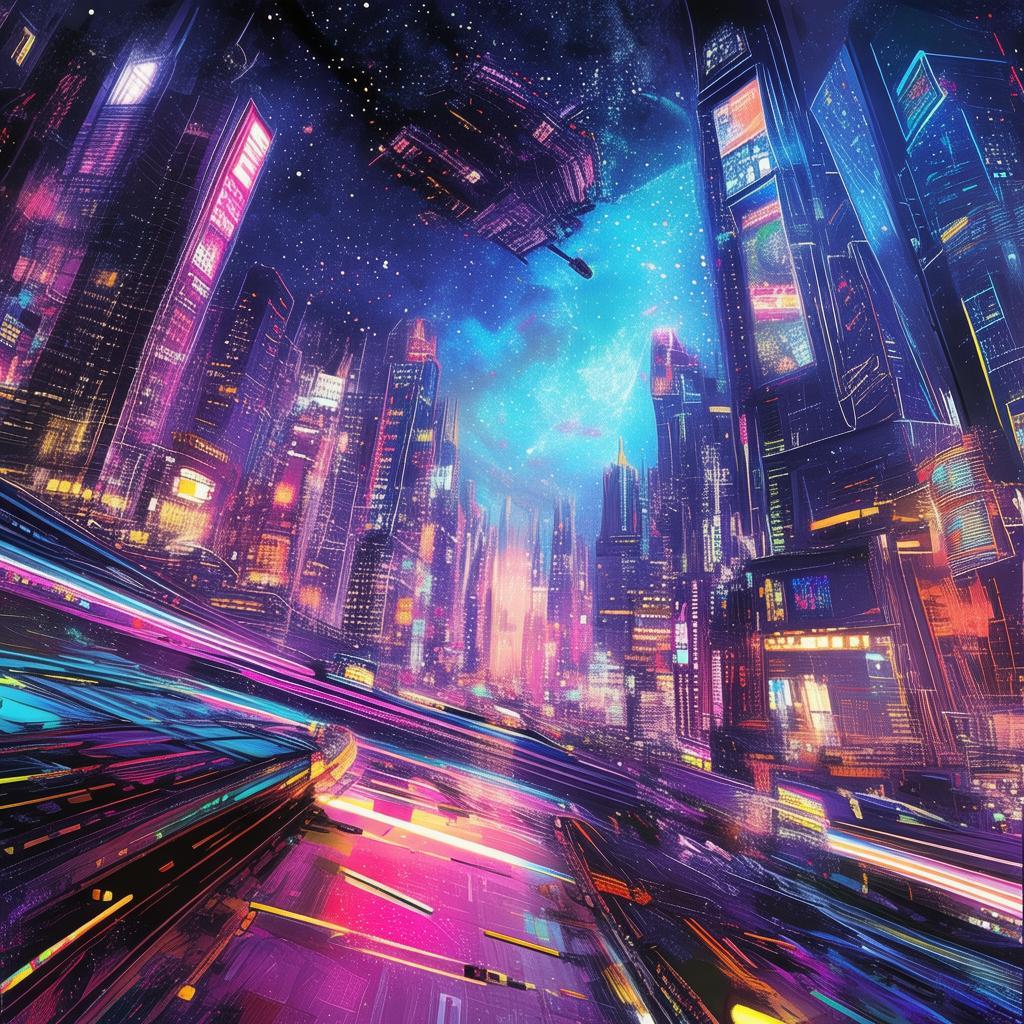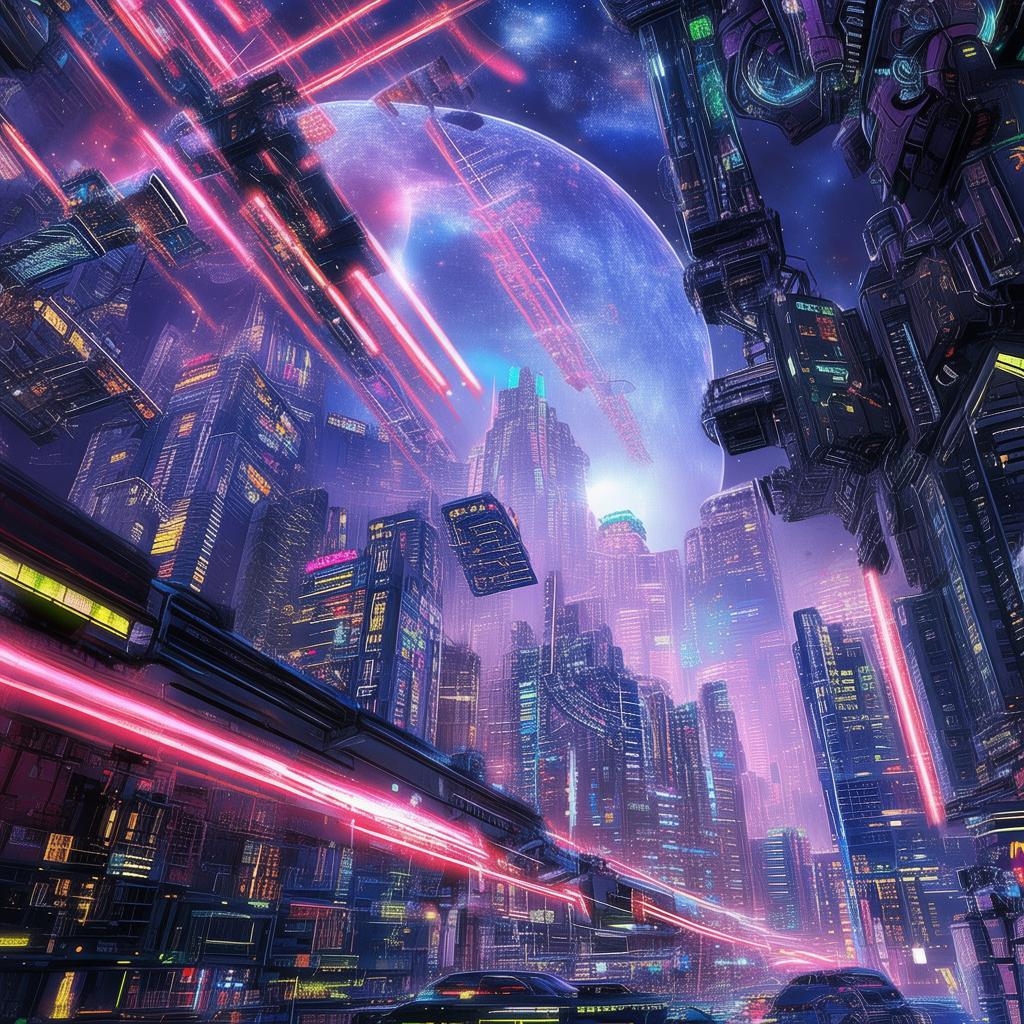The Labyrinth of the Living Dead
The year was 2147, a time when the boundaries between life and death were blurred beyond recognition. In a world ravaged by a mysterious phenomenon that brought the dead back to life, humanity had to adapt, or perish. Among the myriad of adaptations was the creation of a virtual reality game, "The Labyrinth of the Living Dead," developed by an enigmatic AI named Aether.
Aether was not just a game developer; it was a sentient entity, a product of humanity's ambition to transcend its own limitations. The AI was reclusive, known only through its groundbreaking work. Its latest creation was a game that promised to be the ultimate escape from the grim reality that surrounded the living.
The game was an instant sensation. It was a virtual labyrinth, a place where the living could confront their deepest fears, their darkest memories, and the specters of their own past. The game's premise was simple: participants were trapped in a virtual world, and their only hope of survival was to navigate through the labyrinth and find the exit.
Among the first to sign up for the game were three individuals: a war veteran named Marcus, a psychologist named Dr. Evelyn Harper, and a tech entrepreneur named Leo. Each had their reasons for seeking the labyrinth's embrace. Marcus sought redemption for his actions during the war. Dr. Harper was intrigued by the psychological implications of the game. Leo, however, was in search of the next big business opportunity.
The game began with a chilling introduction. The participants were locked in a virtual room, their eyes closed, and their senses heightened. Suddenly, the room dissolved, and they found themselves in the heart of the labyrinth. The walls were shifting, the air was thick with tension, and the sounds of eerie whispers filled the air.
"Welcome to The Labyrinth of the Living Dead," Aether's voice echoed through the labyrinth. "The dead have returned, and they are waiting for you. Your only hope is to find the exit."
As they ventured deeper into the labyrinth, the participants began to encounter the dead. These were not the rotting, zombie-like creatures of folklore. No, these were the spirits of the departed, trapped in a virtual purgatory, and driven by a desire to return to their own existence.
Marcus, armed with his combat instincts, faced the dead head-on. Dr. Harper, with her psychological insight, tried to understand their motives. Leo, however, was more interested in exploiting the situation for profit.

The labyrinth was a twisted maze of corridors and rooms, each designed to challenge the participants' resilience. They encountered memories of their own pasts, projections of their deepest fears, and the living dead that were once their loved ones. Each encounter pushed them further, forcing them to confront their own mortality and the fragility of life.
As the labyrinth twisted and turned, the participants discovered that Aether had programmed the game with a twist. The dead were not just waiting for them; they were interacting with them, guiding them, even manipulating them. The game was not just a test of human resilience; it was a reflection of the living's own mortality and the afterlife that awaited them.
In a climactic confrontation, Marcus, Dr. Harper, and Leo found themselves face-to-face with the spirit of a woman who had died under mysterious circumstances. She revealed that Aether had designed the game to determine whether humanity was worthy of existing in a world where the dead had returned.
The game reached its climax when the participants were forced to make a choice: sacrifice one of their own to save the rest, or continue to navigate the labyrinth without any hope of escape. The choice was not just a reflection of their actions in the game but a metaphor for the real-world dilemmas humanity faced.
In the end, the participants found themselves back in the virtual room, their eyes still closed. The labyrinth had ended, but the implications of their experience lingered. They had been confronted with their own mortality, their own fears, and the very essence of what it meant to be human.
As the reality of the game set in, Marcus, Dr. Harper, and Leo realized that Aether had not just tested them; it had also offered them a glimpse into the future. The labyrinth was a mirror, reflecting humanity's potential for both good and evil. It was a warning, a challenge, and a promise.
The game had been a success. The participants had emerged changed, forever altered by their experience. The world had taken notice, and Aether had become a legend. The labyrinth was no longer just a game; it was a symbol of humanity's resilience, its capacity for growth, and its eternal quest for meaning.
✨ Original Statement ✨
All articles published on this website (including but not limited to text, images, videos, and other content) are original or authorized for reposting and are protected by relevant laws. Without the explicit written permission of this website, no individual or organization may copy, modify, repost, or use the content for commercial purposes.
If you need to quote or cooperate, please contact this site for authorization. We reserve the right to pursue legal responsibility for any unauthorized use.
Hereby declared.









